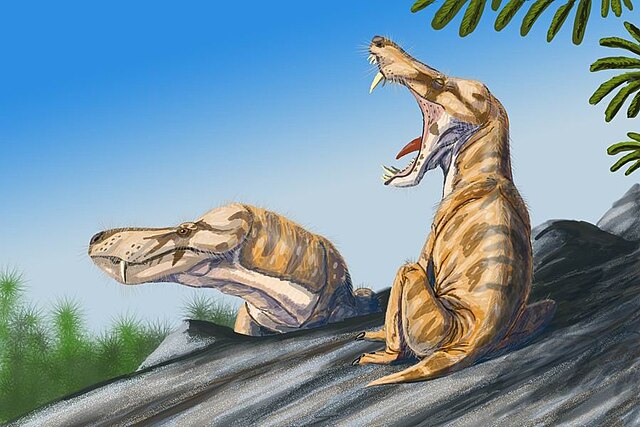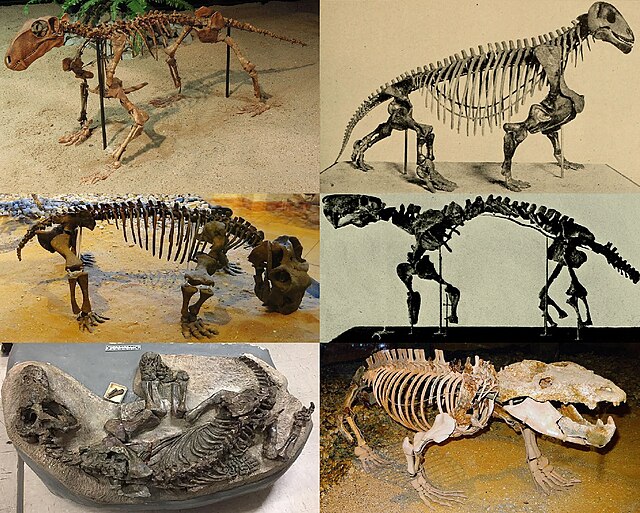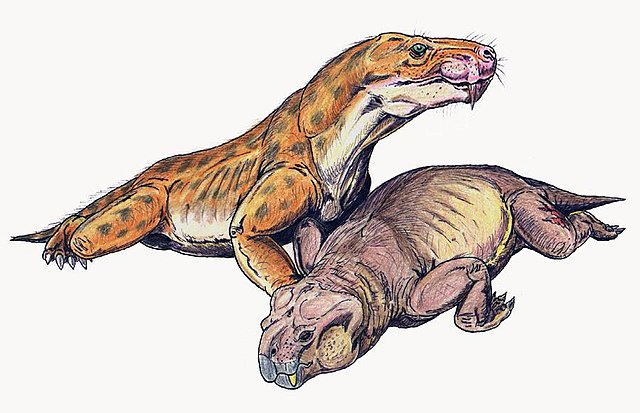Therocephalia is an extinct clade of eutheriodont therapsids from the Permian and Triassic periods. The therocephalians ("beast-heads") are named after their large skulls, which, along with the structure of their teeth, suggest that they were carnivores. Like other non-mammalian synapsids, therocephalians were once described as "mammal-like reptiles". Therocephalia is the group most closely related to the cynodonts, which gave rise to the mammals, and this relationship takes evidence in a variety of skeletal features. Indeed, it had been proposed that cynodonts may have evolved from therocephalians and so that therocephalians as recognised are paraphyletic in relation to cynodonts.
Therocephalia
Head reconstruction of Lycosuchus, an early therocephalian
Skeleton of a lycosuchid on display in the University of California Museum of Paleontology, Berkeley
Moschorhinus life restoration, an akidnognathid
Therapsida is a clade composing of a major group of eupelycosaurian synapsids that includes mammals and their ancestors and close relatives. Many of the traits today seen as unique to mammals had their origin within early therapsids, including limbs that were oriented more underneath the body, as opposed to the sprawling posture of many reptiles and salamanders.
Therapsida
Illustration of Alopecognathus, an early therocephalian therapsid
Holotype skull of Raranimus dashankouensis, the most basal known therapsid
Restoration of Euchambersia with dicynodont prey. Note that this South African therocephalian is suspected to be the oldest known venomous tetrapod.







